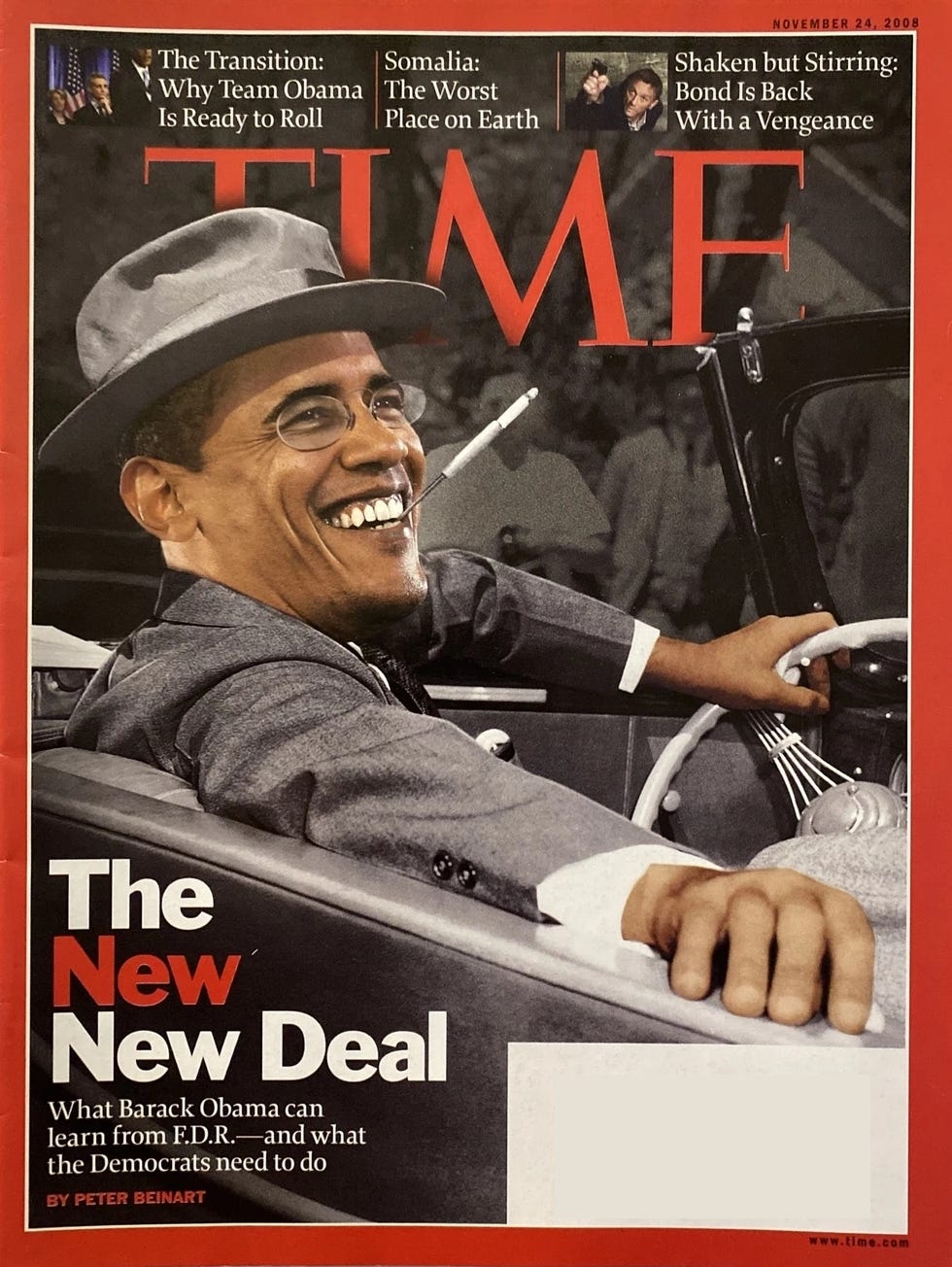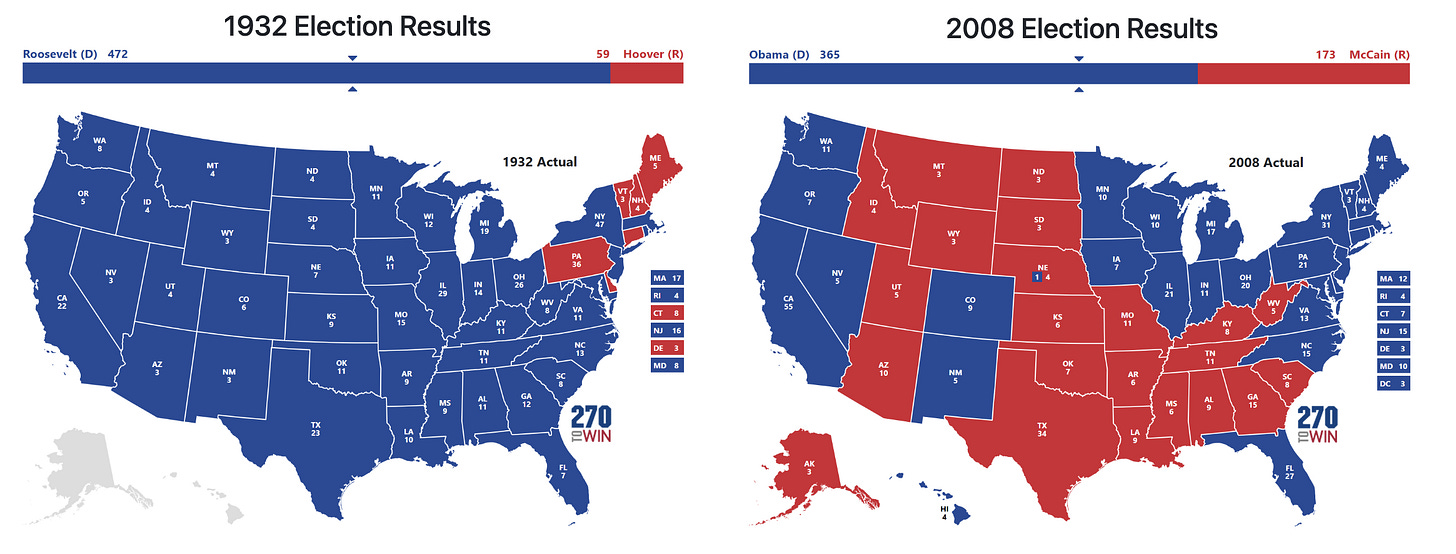The “Roaring 2020s” and Other False Rhymes of History
Those who know only a little history are doomed to see it repeating everywhere they look.
Throughout the COVID-19 pandemic, amid all the lockdowns, anxieties, restrictions, inconveniences, and disruptions, a chorus of commentators, journalists, and scholars emerged bearing gifts of optimism and a brighter future. Where some embraced the Covidian faith of permanent, ritualized safety theater as a sign of moral purity, and others joined the Cro-Magnon resistance to a fictional vaccine-based plot of world domination, these newcomers instead saw hope. Looking through the lens of history, they glimpsed the dawn of a new golden age visible on the horizon. For this had all happened before.
A century prior, the Spanish Flu pandemic convulsed the world between 1918 and 1920, killing tens of millions and interrupting daily life in a variety of ways. But when the dust settled, and the winds of plague had blown over, people lived with a vivacity they’d never had before. Music became more boisterous, fashion more ostentatious, and nightlife exploded into a thriving, thrumming shindig. Youth culture was electric and irrepressible, driven by a thirst for life that not even Prohibition could quash. It was called the Roaring ‘20s. And it inspired much of the COVID-era commentariat to converge around a common narrative: the end of the pandemic would give rise to the “Roaring 2020s.” More than a mere 21st-century “return to normalcy”, the post-pandemic world would be a renaissance of social life — of sex, partying, dating, and other signs of vitality from a youth culture that had become worryingly isolated, neurotic, celibate, and infantilized. This prediction was repeated again and again, from business leaders to academics to op-ed writers, from CNN to The Atlantic, to Bloomberg, Forbes, NPR, Big Think, the BBC, and more.
But nothing happened.
The sexless trajectory of young people continued unabated. About half of adult Gen Zers are currently single, and the percentage of young adults who have not had sex in the last three months, or the last year, or ever, has only risen since the pandemic ended. Adult Zoomers (median age 23) are having the same amount of sex as Baby Boomers (median age 70). There are many adjectives with which we might describe this situation. “Roaring” ain’t among them. “Roaring” is not legally permitted within 500 feet of this trend.

What went wrong with these predictions? After all, everything seemed to line up so neatly with 1918. Once-in-a-century global pandemic? Check. Massive disruptions to social gatherings? Check. Fear, stress, and death? Check. So why did the Lost Generation (born 1883–1900) burst out of the Spanish Flu like jazzy Van Wilders while Zoomers and younger Millennials shuffled out of COVID like malfunctioning chatbots trained on Sheldon Cooper and Napoleon Dynamite?
The predictions of a Roaring 2020s were not mistaken because historical patterns never repeat in similar situations, but because finding two situations that are in fact similar and not merely superficially similar are rare and easily confused. True, COVID-19 and the Spanish Flu of 1918 were both global pandemics. But the circumstances of life between these two eras could not be more different. The Lost Generation weathered their pandemic years by playing cards, knitting, whittling, reading the paper, or writing letters. After two years of the Jane Austen lifestyle, it’s no wonder they went off like a stick of dynamite. Today’s young adults, by contrast, have big screen TVs, smartphones, endless social media feeds, video games, internet porn, same-day Amazon deliveries, and DoorDash. In 1918, people went stir crazy reading and re-reading magazines or the Bible. In 2020, people became habituated to remote work, Zoom calls, and never leaving their homes.
This is not the first time prognosticators have mistaken the superficially similar with the actually similar in recent years. When President Barack Obama took office in 2009 during the heart of the Great Recession, talking heads drew the seemingly obvious parallels with President Franklin Delano Roosevelt. Two Democratic presidents, each sweeping into power with commanding victories following unpopular Republican administrations. Two ambitious and eloquent reformers, both confronting severe economic crises. Over and over, Obama was compared to FDR as commentators spoke of a coming “New New Deal.” Time magazine’s November 24, 2008 cover even bore an image of FDR with Obama’s face photoshopped over it.

But Barack Obama was no FDR. Obama’s presidency, while well-regarded by presidential historians, and historic in that he was the first black/multiracial president, never came within a mile of being transformative. There was no New New Deal, nor any list of policy achievements that can in any way be said to have fundamentally reshaped the country. Blinded by the similarities between the circumstances of 1932 and 2008, pundits missed all the differences.
For one, the Great Recession was not nearly as devastating as the Great Depression, and far less desperate times called for far less desperate measures. For another, while Obama decisively defeated McCain in 2008, his victory was nothing like FDR’s landslide in 1932. Obama had smaller majorities in both houses of Congress, served during a vastly more partisan era, and presided over a bureaucracy much larger and more entrenched than the government of the 1930s. Moreover, for all that Republicans tried to paint him as a radical leftist, Obama was no firebrand, but a Third Way-style moderate who pursued measured and incrementalist reforms even when he had the chance to push for more aggressive changes.

Similarly, when mass protests erupted across the Arab world in the early 2010s, onlookers saw another historical echo. With tens of millions of people taking to the streets to demand democratic representation, basic freedoms, and an end to corruption and police states, it reminded many of the fall of the Berlin Wall and the revolutions of 1989. Just as the Eastern Bloc revolted and communism fell, the Arab Spring, we were told, would lead to a new era of democracy and freedom in the Muslim world. Indeed, the Arab Spring was broadly seen as a continuation of the pro-democracy wave radiating from the fall of communism. But that’s not how things played out.
Two years of massive unrest across more than 15 countries captured the attention of the world. Tens of thousands were killed, governments were overthrown, leaders deposed, and wars started. The Arab world burned, but no phoenix of democracy rose from its ashes. Most countries weathered the storm and continued business as usual once the protests died down. Other regimes changed hands or fought civil wars but ended up no freer than before. Only Tunisia, alone among the countries of the Arab Spring, emerged as an actual democracy, and its system is barely hanging on by a thread.
There were surface-level similarities between the Arab Spring and the revolutions of 1989, but the fixation on them caused observers to overlook the myriad ways in which conditions were dissimilar. The Eastern Bloc regimes were client states of the Soviet Union, externally propped up and on the verge of collapse the moment the USSR loosened its control, a dynamic absent from the Arab world. Eastern Europe also had relatively high levels of industrialization, a skilled workforce, and a clear path to integrate into the rest of Europe. Arab states, by contrast, had less industrialization, a less skilled workforce, populations of disproportionately young and unemployed people, and no real regional geopolitical anchors. Above everything, Eastern Europe had a stronger historical and cultural grounding in Enlightenment values. They had the soil in which democracy could take root. The Arab world, whose history and traditions were almost exclusively dominated by Islam, found the seeds of democracy far more difficult to sprout and sustain.
More recently, Russia’s invasion of Ukraine in 2022 sparked fears of World War III based on seeming historical resemblances. Some commentators saw parallels to the First World War, in which a regional conflict triggered a global war of interlocking alliances. Others saw Russian President Vladimir Putin as Hitler beginning World War II by invading a neighboring country. The result was the same: everyone — from Bill Ackman to George Soros, from the Biden White House to Ukrainian President Volodymyr Zelenskyy to Russian Foreign Minister Sergei Lavrov — couldn’t stop talking about World War III. Neither could the press. The New York Times ran pieces with headlines like “This Is How World War III Begins.”

Except, unlike in WWI and WWII, the world is both deeply globalized and armed with nuclear weapons. And unlike the early 20th century, when Europe was a powder keg of countries hostile toward one another, 21st-century Europe is more unified than it’s ever been. The incentives to keep the peace and the disincentives to break it have never been more powerful. In large part, this is what made Putin’s invasion so shocking and outrageous. But the notion that the rest of the industrialized world would follow suit is a conclusion that only seemed plausible by focusing on flashy historical comparisons and disregarding the many meaningful ways in which the world has changed.
We would also be remiss not to mention the ongoing predictions of America’s alleged march into fascism led by President Donald Trump. For nearly a decade, the commentariat has harped on any similarities between Trump and historical fascists, including his style, authoritarian rhetoric, hard right policies, cult of personality, and attacks on democratic norms, the press, and the judiciary. Other commentators tackle the issue from the other direction, drawing parallels between the US of the 2010s and 2020s and Weimar Germany. The reasoning is straightforward: Trump reminds many of a fascist, therefore he is a fascist, and therefore he will transform a brittle and fractured United States into a fascist regime. Historian Timothy Snyder has made a second career out of this narrative, rising from an esteemed but nevertheless niche academic to a high-profile pundit in the years since Trump first took office in 2016.
Unlike the other predictions explored here, this one can’t be officially designated a failure yet simply because the Trump era is still ongoing. Trump still has time to seize absolute control of the military, law enforcement, and intelligence agencies, abolish the other branches of government, and turn the US into a totalitarian dystopia. But it’s been nine years, and the American Reich has not yet materialized. Perhaps because Trump, for all his faults, isn’t actually driven by ideology, but by the desire for fame, fortune, approval, and staying out of a jail cell. Or perhaps it’s that the US, for all its flaws, is a 30 trillion dollar economic and cultural behemoth that resembles the Weimar Republic only in the narrowest and least relevant ways.
We’ve all heard the saying “history repeats itself.” In recent years, it’s been overtaken by the trendier and more clever-sounding variation, “history doesn't repeat itself, but it rhymes.” There’s some truth to both. The predictions of a New New Deal, an Arab Spring, an American Reich, a Russo-Ukrainian World War, and the Roaring 2020s did not fail because historical patterns never repeat. Any tour through human history will reveal commonalities and recurring trends. But to glean anything of predictive value from them requires methodically accounting for a plethora of moving parts. As Heraclitus observed more than 2,500 years ago, no man ever steps in the same river twice, for it is not the same river, and he is not the same man. History does sometimes rhyme, but if you treat its music like a jingle instead of a symphony, you risk becoming tone-deaf to the patterns, hearing echoes in every noise.
See also: “The Limits of History”
Subscribe now and never miss a new post. You can also support the work on Patreon. Please consider sharing this article on your social networks, and hit the like button so more people can discover it. You can reach me at @AmericnDreaming on Twitter, @jamie-paul.bsky.social on Bluesky, or at AmericanDreaming08@Gmail.com.





